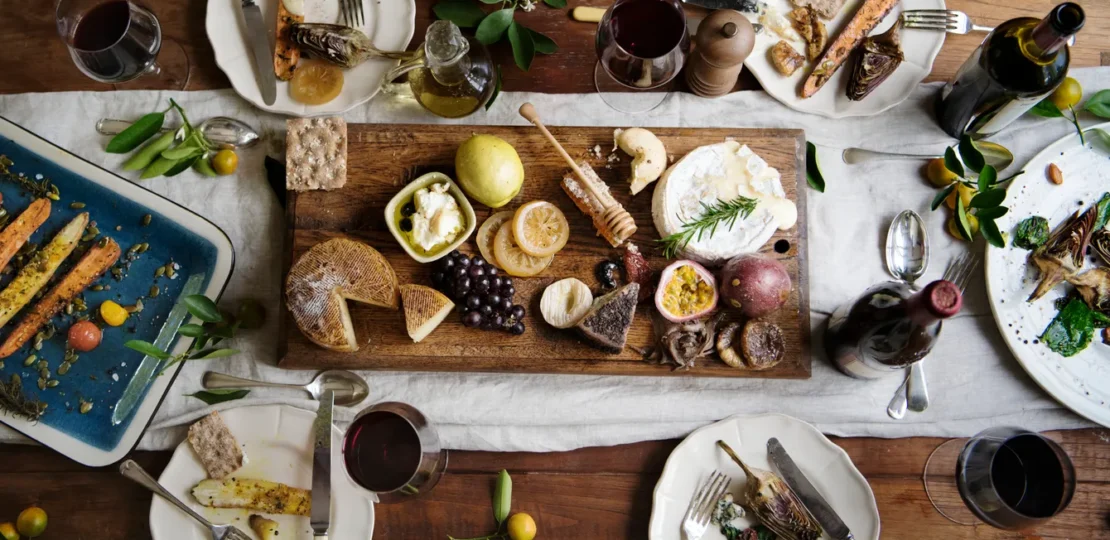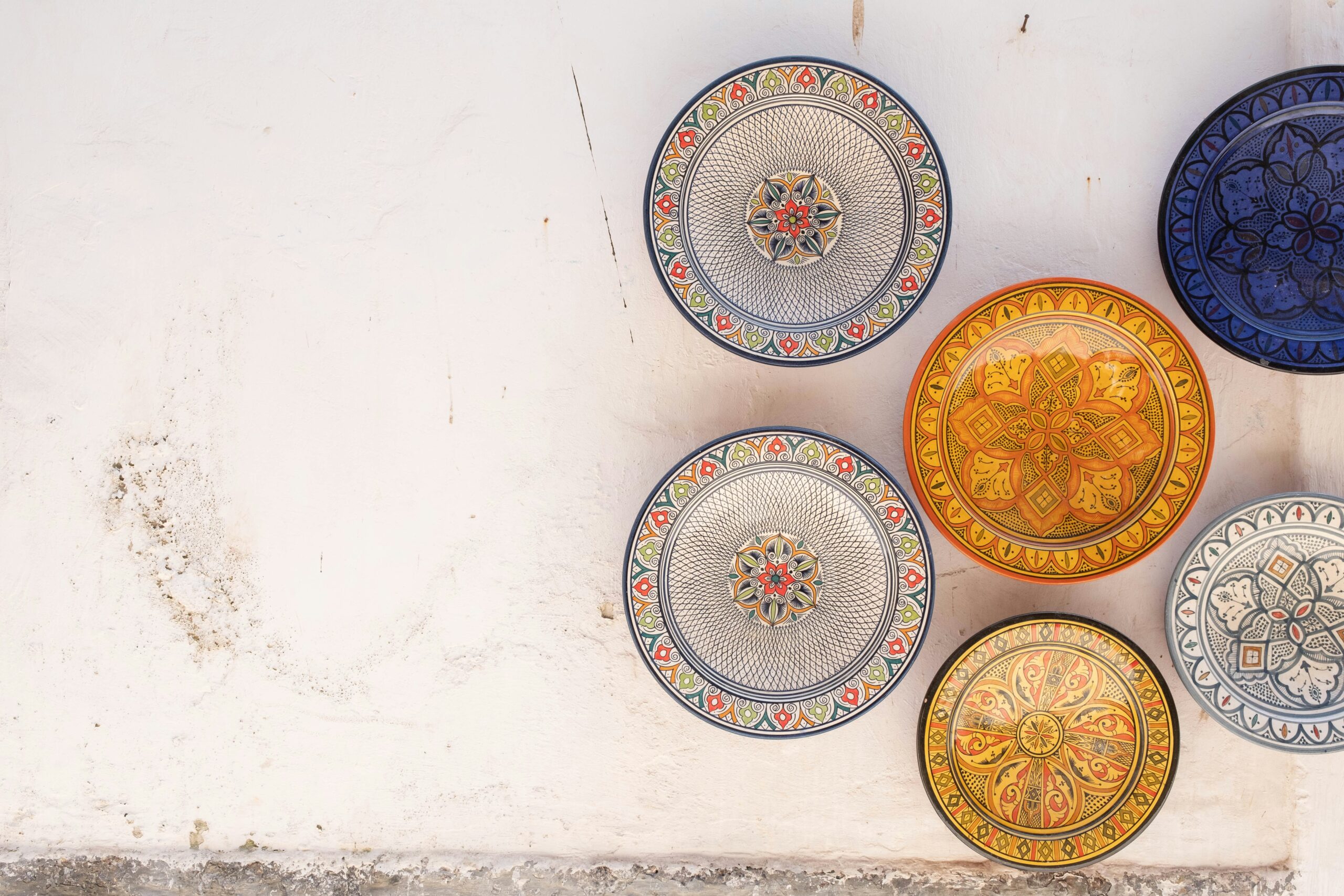Discover the Flavors of France: Authentic French Recipes to Savor
August 24, 2024 | by [email protected]

Introduction to French Cuisine
French cuisine, celebrated globally, is much more than a gastronomic tradition; it is an integral part of France’s cultural identity. The origins of French cooking can be traced back to medieval times, evolving significantly over centuries to incorporate influences such as Italian cuisine during the Renaissance. This historical layering of flavors and techniques has resulted in a rich tapestry of culinary practices that vary distinctly across regions. For instance, the buttery pastries and rich sauces of northern France contrast with the Mediterranean flavors of Provence, characterized by olive oil, herbs, and vegetables.
The art of French cooking places a strong emphasis on the freshness and quality of ingredients. Whether it’s a simple baguette or an elaborate multi-course meal, the selection of fresh produce, high-quality meats, and fine cheeses is crucial. This dedication to quality extends to preparation and presentation as well. French chefs, from humble bistro cooks to world-renowned culinary artists, consider the visual appeal of a dish just as important as its flavor. The balance of color, texture, and garnishing all contribute to a complete sensory experience.
French cuisine’s influence on global culinary traditions is profound. Techniques such as sautéing, poaching, and making emulsions have become staples in kitchens worldwide. Dishes like Coq au Vin, Boeuf Bourguignon, and the venerated Croissant are beloved across continents. The meticulous preparation involved in these recipes showcases the hallmark of French cooking – patience and precision.
Known for its decadence, French cuisine often incorporates rich sauces, pâtés, and desserts that are imbued with flavors ranging from sweet to umami. Take, for example, the classic French dish Coq au Vin, a hearty stew of chicken braised with wine, mushrooms, and garlic. This dish exemplifies the traditionally slow-cooked, flavorful essence that characterizes French culinary excellence.
Allow yourself to indulge in the exquisite world of French cuisine, where each meal invites you to savor the harmony of flavors and the beauty of artistic presentation. This blog will guide you through authentic French recipes that capture the essence of France’s rich culinary heritage.
Essential French Ingredients
French cuisine is renowned for its rich flavors, and understanding the essential ingredients is the first step to mastering its artistry. Some staple ingredients that epitomize French cooking include butter, cheese, wine, and fresh herbs. Each ingredient plays a crucial role in creating the distinctive and complex taste profile that defines French dishes.
Butter is a cornerstone of French culinary tradition. It adds depth, richness, and a creamy texture to sauces, pastries, and sautéed dishes. French butter, known for its high-fat content and subtle flavor, elevates dishes like croissants and Beurre Blanc sauce to a level of indulgent perfection.
Cheese is another quintessential component of French cuisine. France boasts a diverse array of cheeses, each with its own unique taste and texture. From the soft, creamy Brie de Meaux to the sharp, pungent Roquefort, cheese is often used as a key ingredient in recipes or served simply with bread and wine. Its variety and quality make it a versatile addition to many French dishes.
Wine is integral to French cooking, serving not only as a beverage but also as a vital ingredient. Whether it’s a Burgundy wine for beef bourguignon or a dry white wine for coq au vin, wine enhances the flavor profile by adding acidity, depth, and complexity. The choice of wine can significantly influence the taste of a dish.
Fresh herbs like thyme, rosemary, parsley, tarragon, and chervil are frequently used to infuse dishes with aromatic flavors. They are essential in creating bouquet garni, a bundle of herbs that is simmered in sauces and stews to enhance their flavor. Fresh herbs bring a bright, lively character to French dishes, highlighting the natural flavors of the primary ingredients.
Sourcing these ingredients is easier than ever, with many local markets and online stores specializing in authentic French products. Websites such as The French Click and Murray’s Cheese offer a wide selection of French ingredients delivered right to your doorstep. Supporting your local markets not only ensures the freshness of the ingredients but also promotes sustainable sourcing.
By integrating these essential French ingredients, you can begin to recreate the authentic flavors that make French cuisine beloved worldwide. Each component contributes uniquely, helping to build the delightful complexity that French cooking is known for.
Classic French Breakfast Recipes
French cuisine is celebrated worldwide for its elegance and rich flavors, and nowhere is this more evident than in the array of classic French breakfast recipes. French mornings often begin with the tantalizing scent of freshly baked croissants. Originating from Austria and brought to France in the 19th century, croissants have since become a quintessential part of French breakfast culture. These crescent-shaped pastries are made from buttery, flaky dough that is layered and folded repeatedly to achieve their delicate texture. A perfect croissant should be golden brown and crisp on the outside with a soft, airy interior.
Alongside croissants, pain au chocolat is another beloved French bakery item. Literally translating to “chocolate bread,” pain au chocolat is similar in preparation to croissants but includes a rich chocolate filling. This delightful pastry traces its roots back to the same period as the croissant and has become a staple for a sweet breakfast or an indulgent snack.
Quiche, a savory French breakfast option, offers a heartier alternative to pastries. Perhaps the most famous version is Quiche Lorraine, named after the Lorraine region of France. This dish consists of a savory custard filled with cream, eggs, bacon, and cheese, all nestled in a flaky pastry crust. Quiche has a storied history dating back to the 16th century and has evolved into countless variations to suit every palate.
For those eager to recreate these classic French breakfast dishes in their own kitchens, several resources can provide detailed recipes and step-by-step guidance. From mastering the art of laminated dough for croissants and pain au chocolat to perfecting the custard consistency for quiche, home cooks can embark on a delightful culinary journey. Croissant Recipe, Pain au Chocolat Recipe, and Quiche Lorraine Recipe offer comprehensive instructions to achieve authentic results.
Embrace the flavors of France and transform your breakfast routine with these timeless recipes. Each dish not only provides a taste of French culinary tradition but also brings a touch of elegance to your table.
French Bistro Favorites
French bistro cuisine offers a delightful array of iconic dishes that reflect the charm and culinary finesse of France. Among these, French onion soup, croque monsieur, and niçoise salad stand out as quintessential favorites, each with its own unique history and flavor profile.
French onion soup, a comforting classic, dates back to Roman times but gained popularity in 18th-century Paris bistros. This soul-soothing soup features caramelized onions simmered in a rich beef broth, topped with a slice of toasted baguette and melted Gruyère cheese. The interplay of sweet onions and savory broth creates a deeply satisfying dish. A classic pairing suggestion would be a crisp Chardonnay, which complements the soup’s richness beautifully.
The croque monsieur, a staple of French cafes and bistros, may seem like a simple grilled cheese sandwich at first glance. However, its origins trace back to early 20th-century Parisian cafes, where it quickly became a beloved snack. Crafted from ham, cheese (typically Gruyère or Emmental), and béchamel sauce, this dish is broiled to perfection, resulting in a crisp, golden exterior and a gooey, delightful interior. To elevate its flavors, pair it with a light, fruity Beaujolais wine or a side of green salad lightly dressed with vinaigrette.
Niçoise salad brings together the vibrant flavors of Provence, featuring ingredients such as tuna (either canned or seared), hard-boiled eggs, olives, anchovies, tomatoes, and green beans, all served on a bed of crisp lettuce. Known for its colorful presentation and freshness, the salad is perfect for a light lunch or dinner. The origins of this salad are rooted in Nice, showcasing the bounty of the Mediterranean region. A glass of Rosé wine is an excellent companion, highlighting the dish’s summery vibe and balancing the flavors.
These French bistro favorites not only capture the essence of French cuisine but also offer a wonderful culinary journey through France’s rich culinary heritage. Explore the full recipes and indulge in creating these delightful dishes in your kitchen.
Click here for the full French Onion Soup recipe.
Find the complete Croque Monsieur recipe here.
Discover the detailed Niçoise Salad recipe here.
Rustic French Country Dishes
French cuisine is celebrated worldwide for its depth and diversity, with each region boasting its own unique flavors and culinary traditions. Among the most beloved are the rustic dishes from the French countryside, which embody comfort and robust flavors. Signature dishes like coq au vin, cassoulet, and ratatouille stand out as culinary treasures, each with its own rich history and regional significance.
Coq au vin, originating from the Burgundy region, showcases the simplicity and heartiness of French country cooking. Traditionally, this dish was made using an older rooster, slowly braised with red wine, mushrooms, onions, and occasionally a splash of cognac. The slow braising process not only tenderizes the meat but also melds the ingredients into a rich and flavorful stew that’s truly comforting.
Moving to the southwest of France, we encounter cassoulet. This iconic dish hails from the regions of Toulouse, Carcassonne, and Castelnaudary, each claiming their own version. Cassoulet is a slow-cooked casserole of white beans, duck confit, pork sausages, and various cuts of pork. The dish’s name is derived from the traditional cooking vessel, the cassole, a deep, earthenware pot that allows the ingredients to cook together harmoniously, resulting in a deeply savory and hearty meal.
From Provence, we savor ratatouille, a vibrant vegetable stew that celebrates the bounty of the region’s produce. Eggplant, zucchini, bell peppers, tomatoes, and aromatic herbs form the core of this dish, which is typically prepared by stewing the vegetables until they are tender and flavorful. Ratatouille is not only delicious but also visually appealing, often arranged in a beautiful mosaic of colors.
These dishes reflect the importance of local ingredients and traditional methods passed down through generations. Their preparation methods, while varied, emphasize slow cooking and the melding of flavors to create dishes that are truly comforting. To delve deeper into the preparation of these iconic recipes, visit our detailed guides on Coq au Vin, Cassoulet, and Ratatouille.
Elegant French Desserts
French desserts represent a pinnacle of culinary refinement, bringing together precise techniques with an artful presentation. Among the most cherished are the tarte tatin, crème brûlée, and macarons, each carrying its own unique history and embodying the essence of French patisserie.
The tarte tatin, a blissful upside-down caramelized apple tart, dates back to the late 19th century and is named after the Tatin sisters who accidentally created it. This dessert epitomizes rustic charm with its buttery crust and lush caramel-coated apples. Achieving a perfect tarte tatin involves cooking the apples just right so they hold their shape while absorbing the rich caramel.
Crème brûlée, translating to “burnt cream,” is a decadent indulgence characterized by its silky custard base and a crispy caramelized sugar top. Its origins can be traced to the 17th century, a true testament to its lasting appeal. The key to an impeccable crème brûlée lies in mastering the custard’s consistency and achieving the signature crunchy top layer with a blowtorch or broiler.
Lastly, macarons, delicate almond meringue cookies filled with ganache, buttercream, or jam, are a quintessential Parisian treat. These colorful confections require patience and precision, from achieving the perfect macaronage (batter consistency) to ensuring a smooth, shiny surface and characteristic “foot” at the base. Baking macarons entails strict control over oven temperature and humidity to avoid issues like cracked shells or hollow centers.
For those eager to replicate these desserts, understanding and respecting the traditional techniques is crucial. Use high-quality ingredients, meticulously follow recipe steps, and practice to perfect the results. Visual inspiration often aids the process, so below are stunning photos of each dessert and links to detailed recipes:
Pairing French Food with Wine
Pairing French cuisine with wine is a cherished tradition that enhances the depth and complexity of flavors, transforming a meal into a truly memorable experience. French culinary culture places great emphasis on this practice, emphasizing that the correct wine can elevate the dishes and highlight their subtleties. Understanding the fundamentals of wine pairing can significantly enhance your culinary endeavors with authentic French recipes.
To begin, it is essential to consider the flavors and characteristics of both the wine and the food. For instance, white wines such as Sauvignon Blanc are known for their crisp acidity and are perfect companions to lighter dishes like the classic Quiche Lorraine or a fresh Salade Niçoise. The bright acidity of Sauvignon Blanc aligns harmoniously with the tangy vinaigrette and fresh vegetables, enhancing their natural flavors.
For richer dishes, such as Coq au Vin or Beef Bourguignon, a robust red wine like Burgundy or Bordeaux provides a perfect match. These wines, known for their complexity and depth, mirror the hearty and intense flavors of such dishes. Burgundy, with its earthy, nuanced profile, complements the earthy undertones of mushrooms and the richness of the slow-cooked meats, creating a cohesive dining experience.
Additionally, sparkling wines like Champagne make excellent accompaniments to French appetizers and desserts such as Brie with Honey or Tarte Tatin. The effervescence of Champagne cleanses the palate and balances the sweetness, thus creating a delightful contrast and enhancing the enjoyment of the dish.
For more detailed insights into pairing French dishes with wine, you might explore resources such as [Wine Folly](https://winefolly.com) or [VinePair](https://vinepair.com), which offer comprehensive guides and tips. To visualize this exquisite harmony, the featured photograph showcases a classic French meal elegantly paired with a glass of wine, illustrating the perfect union of flavors.
Bringing French Cuisine to Your Home
French cuisine is renowned for its sophistication, balance, and the sheer pleasure it brings to the table. While it may seem daunting at first, bringing French cooking into your home is a rewarding endeavor. With the right kitchen tools and techniques, anyone can master the art of French cooking. Essential tools like a sharp chef’s knife, a heavy-duty saucepan, and a cast-iron skillet are indispensable in the French kitchen. These tools enable you to perform fundamental French cooking techniques such as sautéing, braising, and reducing sauces to perfection.
Meal planning is another crucial aspect of French cuisine. Organizing your meals and menus not only simplifies the cooking process but also ensures variety and balance, hallmarks of authentic French dining. Begin by selecting recipes that suit your taste and schedule. Opt for dishes like Coq au Vin or Ratatouille that can be prepared in large quantities and enjoyed over multiple meals. Moreover, sourcing quality ingredients plays a pivotal role in the success of your French dishes. Local farmers’ markets and specialty food shops often carry the fresh produce and authentic ingredients that make a difference in flavor.
For many home cooks, the transition to French cuisine has been a delightful journey. Sarah, a home cook from California, shares, “Incorporating French dishes into our weekly meals has been a wonderful experience. The key is to start with simpler recipes and gradually explore more complex ones. The flavors are incredible, and it’s a fun way to elevate our everyday cooking.” Similarly, John from New York adds, “Investing in good quality cookware and fresh ingredients has transformed our eating experience. French cooking has become a cherished part of our routine.”
To assist you further, a visual inspiration of a French-inspired dining setting can offer a glimpse into the elegance that accompanies French meals. Surrounding yourself with beautiful table settings can make the dining experience more special. For those eager to dive deeper, several beginner-friendly French cookbooks and online cooking classes are excellent resources. They offer step-by-step guidance and recipes that make French cooking accessible to everyone.
RELATED POSTS
View all



